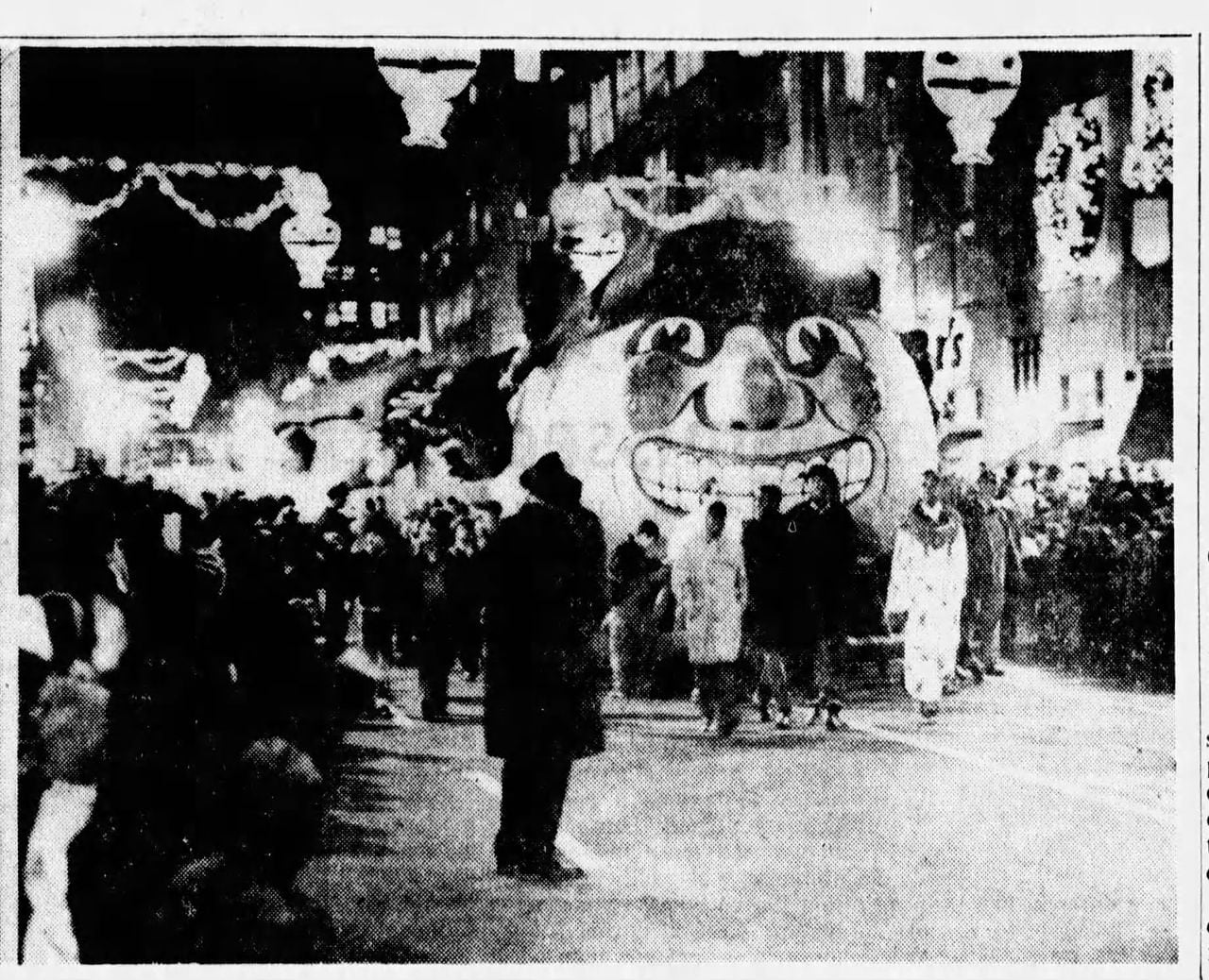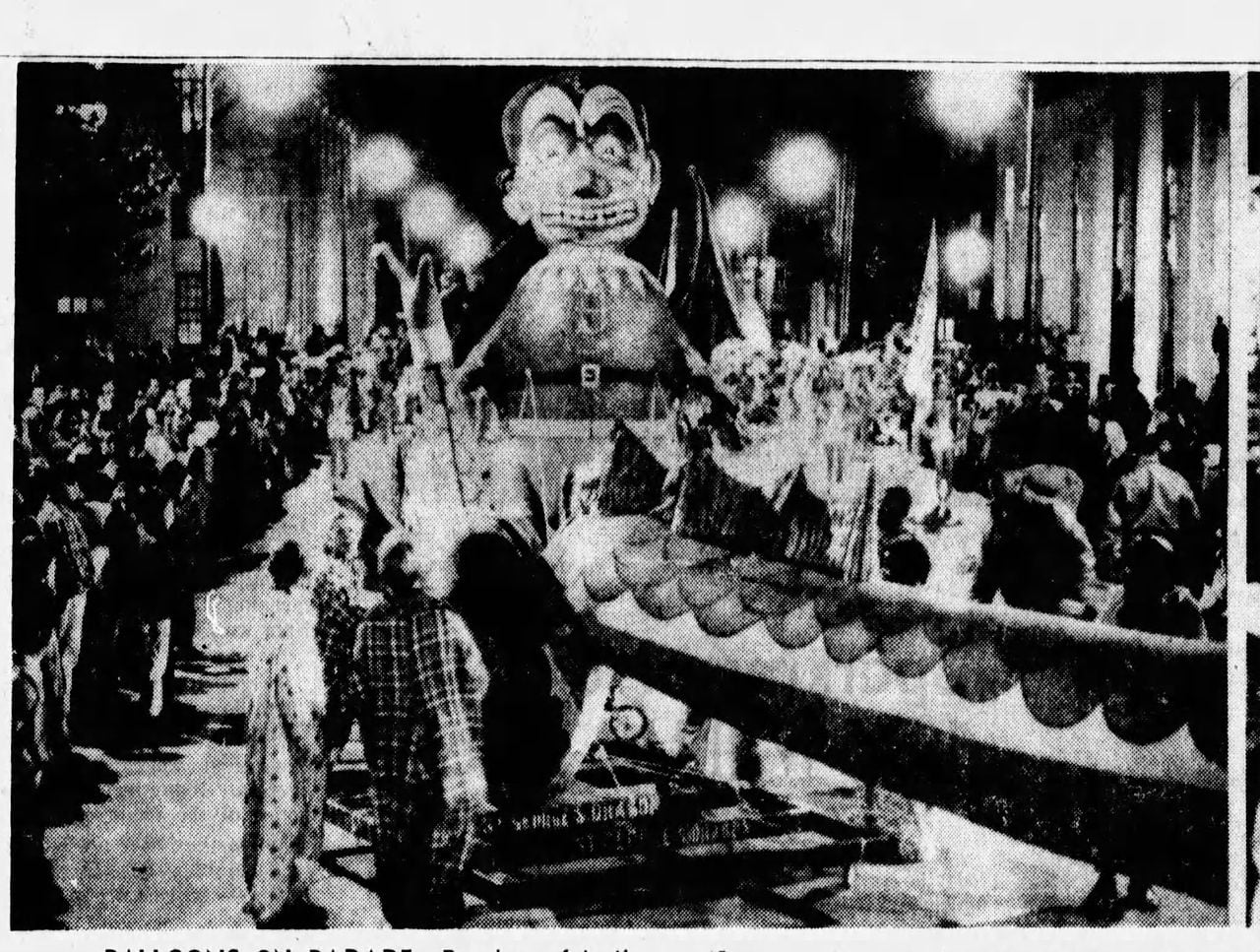Birminghamâs bizarre holiday balloon parades were a strange chapter of 1960s history
Was it a walrus? A ‘sea cow’? Cthulhu come to devour downtown Birmingham?
The child peering up at the 40-foot tall tusked, purple balloon looks as confused as most everyone must have been that November Saturday morning in 1967.
In one of the weirder chapters of Magic City history, a group of civic minded citizens decided Birmingham needed to fill that boring slog between Thanksgiving and Christmas with its own holiday parade.
Birmingham’s Downtown Action Committee in 1966 decided to build on the annual Christmas tree lighting ceremony, and maybe even one up New York’s Macy’s Thanksgiving Day Parade, with its own “animated balloon” parade.
Birmingham had a disadvantage New York City did not have to deal with — power lines running above the street.
Dracula at the 1966 Birmingham balloon paradeFile
The balloons seen in the DAC’s parade the Monday after Thanksgiving 1966 would be mounted on platforms and wheeled along the parade route.
And they would include Dracula. Because why not?
“It was announced that the first giant balloon parade would carry a “Fairyland” theme, with figures representing such classic characters as Peter Pan and Captain Hook, Beauty and the Beast, Snow White and her seven vertically-challenged companions, the Man in the Moon, and most of the Mother Goose crowd,” Birmingham Rewound recalled.
Approximately 100,000 people turned out, reporter Hugh Merrill wrote for The Birmingham News.
The “past-their-prime” balloons delighted children, but puzzled adults, Merrill wrote.

Bear balloon at 1967 Birmingham paradeFile
“They have the most horrible expressions on their faces,” one woman told Merrill.
According to historian Tim Hollis, when the parade returned in November 1967, it was held on Saturday morning rather than at night. While some of the ‘66 balloons returned, the parade featured a Biblical motif, with religious-themed floats.
“What was a little weird for a Christmas parade is that they uniformly portrayed Old Testament figures, both heroes and villains,” Hollis wrote.
That included Goliath and a balloon that was once Mary’s little lamb painted to look like a golden calf.
In 1968, the parade returned on a Saturday morning, about two weeks before Thanksgiving, this time with a circus theme, Hollis wrote.

A scene from the 1966 Birmingham balloon paradeFile
“The city rented anything … that looked even vaguely connected to the circus, including a procession of elephants, a rotund clown sure to give nightmares to those with phobias, a lion, a leopard, a circus pony and a number of others,” he added.
Here is a caption from the November 16, 1968 edition of The Birmingham News:
“This giant serpent was one of many giant balloon characters taking part in today’s Holiday Balloon parade. The characters, along with bands and pretty girls, marched through the downtown streets–as thousands watched–ringing in the holiday season for Birmingham.
“The balloons, which came in all designs from monkeys to dogs, cost more than $5,500 for the event, sponsored by the Downtown Action Committee. It was Birmingham’s second major parade in less that a week. Monday saw the annual Veterans Day event, which is one of the largest in the nation, roll along the same parade route.”

Parades. Balloon parade. Birmingham, Alabama.
The next year would be the last and arguably strangest of the downtown balloon parades. The 1969 parade featured thinly-veiled knockoffs of kids’ favorite characters.
“Just to be sure no one mistook them for the real things,” Hollis wrote, “each monstrosity had a mutilated name painted on each wooden platform.”
Imagine the joy lighting up each child’s face as Charlie Braun, his dog “Snooper” and pals Linnus and Licy, rolled through Birmingham.
Licy, y’all.
It was the last of the balloon parades, although Hollis says there was no explanation of why the parade ended.
“When 1970 rolled around, there was no mourning the loss of a tradition as far as the city was concerned,” Hollis wrote.
For more on the parades, visit Birmingham Rewound.
